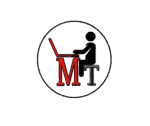Material Technology
Free

-
Index
- Smart Materials
- Recrystallization Annealing
- Nitriding
- Nanomaterials
- Jominy End Quench test
- Iron Iron Carbide Diagram part 1
- Iron Iron Carbide part 2
- Hot Working & Cold Working
- Hardness vs Hardenbility
- Griffith’s theory
- Frank Reed Source
- Fatigue and Fatigue testing part 1
- Fatigue and Fatigue testing part 2
- Dislocation
- Deformation AND its Types
- Creep and its types
- Allotropic forms of Carbon
- Strain Hardening
- Types of cast iron
- How to Pass Material Technology
Material Technology
Objectives of the subject Material Technology is to study basic engineering materials, their structure-property-performance. To study strengthening processes including heat treatment processes in order to enhance properties. To study new materials and their applications Outcomes of the subject Material Technology Learner will be able to Identify various crystal imperfections, deformation mechanisms, and strengthening mechanisms. Demonstrate understanding of various failure mechanisms of materials. Interpret Iron-Iron carbide phase diagram, and different phases in microstructures of materials at different conditions. Select appropriate heat treatment process for specific applications. Identify effect of alloying elements on properties of steels 6. Illustrate basics of composite materials, Nano- materials and smart materials.
Module Classification of Materials consists of the following subtopics Metallic materials, Polymeric Materials, Ceramics and Composites: Definition, general properties, applications with examples Lattice Imperfections: Definition, classification and significance of Imperfections Point defects: vacancy, interstitial and impurity atom defects, Their formation and effects, Dislocation – Edge and screw dislocations Burger’s vector, Motion of dislocations and their significance, Surface defects – Grain boundary, sub-angle grain boundary and stacking faults, their significance, Generation of dislocation, Frank Reed source, conditions of multiplication and significance. Deformation: Definition, elastic and plastic deformation, Mechanism of deformation and its significance in design and shaping, Critical Resolved shear stress, Deformation in single crystal and polycrystalline materials, Slip systems and deformability of FCC, BCC and HCP lattice systems. Strain Hardening: Definition importance of strain hardening, Dislocation theory of strain hardening, Effect of strain hardening on engineering behaviour of materials, Recrystallization Annealing: stages of recrystallization annealing and factors affecting it.
Module Failure mechanisms consists of the following subtopics Fracture: Definition and types of facture, Brittle fracture: Griffith’s theory of fracture, Orowan’s modification, Dislocation theory of fracture, Critical stress and crack propagation velocity for brittle fracture, Ductile fracture: Notch effect on fracture, Fracture toughness, Ductility transition, Definition and significance. Fatigue Failure: Definition of fatigue and significance of cyclic stress, Mechanism of fatigue and theories of fatigue failure, Fatigue testing, Test data presentation and statistical evolution, S-N Curve and its interpretation, Influence of important factors on fatigue, Notch effect, surface effect, Effect of pre-stressing, corrosion fatigue, Thermal fatigue.Creep: Definition and significance of creep, Effect of temperature and creep on mechanical behaviours of materials, Creep testing and data presentation and analysis, Mechanism and types of creep, Analysis of classical creep curve and use of creep rate in designing of products for load bearing applications, Creep Resistant materials.
Module Theory of Alloys& Alloys Diagrams consists of the following subtopics Significance of alloying, Definition, Classification and properties of different types of alloys, Solidification of pure metal, Different types of phase diagrams (Isomorphous, Eutectic, Peritectic, Eutectoid, Peritectoid) and their analysis, Importance of Iron as engineering material, Allotropic forms of Iron, Influence of carbon in Iron- Carbon alloying Iron-Iron carbide diagram and its analysis, TTT diagram, CCT diagram Hardenability concepts and tests, Graphitization of Iron- Grey iron, white iron, Nodular and malleable irons, their microstructures, properties and applications. Module Heat treatment Process consists of the following subtopics Technology of heat treatment, Classification of heat treatment process, Annealing- Principle process, properties and applications of full annealing, Diffusion annealing, process annealing and Cyclic annealing, Normalizing, Hardening heat treatment, Tempering, Subzero treatment, Austempering, Martempering, Maraging and Ausforming process, Surface hardening: Hardening and surface Hardening methods. Carburizing, Nitriding, Cyaniding, Carbonitriding, induction hardening and flame hardening processes.Module Effect of Alloying Elements in Steels consists of the following subtopics Limitation of plain carbon steels, Significance of alloying elements,Effects of major and minor constituents, Effect of alloying elements on phase transformation Classification of tool steels and metallurgy of tool steels and stainless steel. Module Introduction to New materials consists of the following subtopics Composites: Basic concepts of composites, Processing of composites, advantages over metallic materials, various types of composites and their applications 6.2 Nano Materials: Introduction, Concepts, synthesis of nanomaterials, examples, applications and Nano composites 6.3 An overview to Smart materials (e.g.: Rheological fluids).
Suggested References Books for the subject Material Technology by Mumbai university are as follows Materials Science and Engineering by William D. Callister, Jr. – Adapted by R.Balasubramaniam, Wiley India (P) Ltd 2. Material Science and Metallurgy by V.D. Kodgire, Everest Publishing House 3. Mechanical Behaviour of Materials by Courtney, McGraw Hill International New Delhi 4. Introduction of Engineering Materials, by B.K. Agrawal, McGraw Hill Pub. Co. ltd 5. Mechanical Metallurgy by G.E. Dieter, McGraw Hill International New Delhi 6. A text book of Metallurgy by A.R.Bailey, Macmillan & Co. Ltd., London 7. The Structure and Properties of Engineering Alloys by W.F. Smith, McGraw hill Int. 8. Engineering Physical Metallurgy, by Y. Lakhtin, Mir Publishers, Moscow 9. Introduction to Physical Metallurgy by SydneyAvner, McGraw Hill 10. Metallurgy for Engineers by E.C. Rollason – ELBS SOC and Edward Arnold, London.
Prepare For Your Placements: https://lastmomenttuitions.com/courses/placement-preparation/

/ Youtube Channel: https://www.youtube.com/channel/UCGFNZxMqKLsqWERX_N2f08Q
Follow For Latest Updates, Study Tips & More Content!
 /lastmomenttuition
/lastmomenttuition
 / Last Moment Tuitions
/ Last Moment Tuitions
 / lastmomentdost
/ lastmomentdost
Course Features
- Lectures 20
- Quizzes 0
- Duration 50 hours
- Skill level All levels
- Language English
- Students 281
- Certificate No
- Assessments Yes

